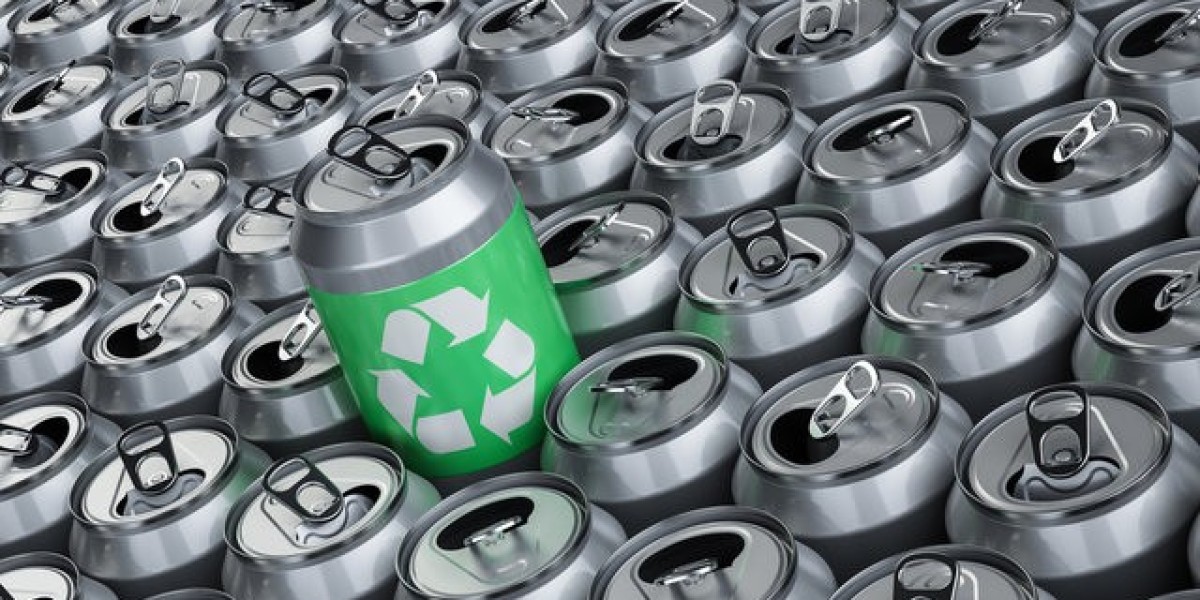As the global demand for metals rises exponentially due to rapid industrialization and urbanization, recycling metal has become extremely important to fulfill this demand in a sustainable manner. Recycled metal serves as an indispensable secondary resource that helps reduce the pressure on mining primary resources and lowers carbon emissions. The recycling rate of metals like steel, aluminum, copper, lead, and zinc has increased steadily over the past few decades as these materials can be recycled endlessly without any loss of quality.
Collection and Recovery Processes Ensure Metals Remain in Use
Complex collection, sorting, and recovery processes work in tandem to keep metal scrap circulating in the economy. Old appliances, vehicles, packaging, and construction debris containing metal components are collected through scrap yards, municipal Recycled Metal programs, and manufacturer take-back schemes. Ferrous metals like steel and non-ferrous metals are then separated using technologies like electromagnets, float-sink methods, and manual sorting. Further segregation based on alloy composition is also done to upgrade recyclates. These refined metals are then reintroduced into the production chain through remelting and casting operations.
Recycled Steel Dominates Secondary Metal Market
Being the highest recycled construction material globally, steel constitutes a major portion of the total metal recycled annually. Various forms of recycled steel scrap like shredded, bundles, and obsoletes are readily processed in electric-arc furnaces to manufacture new steel products. Nearly 50% of global steel production is estimated to rely on scrap as an important raw material input. Countries like the US and Germany have steel scrap recycling rates over 70% owing to well-established collection infrastructures. As a bulk commodity steel scrap sees stable demand and steady price fluctuations in the international marketplace.
Copper a Highly Recycled Metal
Copper recycles back into use at the highest rates among non-ferrous metals. Around 60% of the copper demand in the EU and US originates from post-consumer and obsolete scrap. It faces negligible quality loss during recycling and requires far less energy to remanufacture compared to primary copper. Around 75% of total scrap generated from power and telecom cables, roofing, and plumbing components is captured through municipal waste sorting programs in developed nations. A sizable recycled copper market exists globally where scrap is procured and shipped to smelters across continents.
Lead-Acid Batteries Prime Source of Recycled Lead
Spent lead-acid batteries, accounting for over 95% of global lead recycling, serve as the maximum recycled lead contributor. Roughly 99% of all lead from old car batteries, UPS systems, and solar applications is recovered annually through an efficient collection infrastructure. The lead compounds are extracted through a smelting-sulfuric acid leaching process and refashioned into new battery grids and plates. Lead recycling helps prevent over one million metric tons of CO2 emissions each year according to industry estimates. With average battery recycling rates standing at 99% across the EU and North America, lead recycling remains one of the most successful industrial symbiosis stories.
Aluminum Marks an Upward Trend in Recycled Metal
Recycling rates for aluminum continue to rise steadily, currently estimated around 75% globally. Despite facing lower collection rates compared to steel and copper, aluminum recycling remains highly encouraged due to its high intrinsic recyclability and relatively widespread use across transportation, construction, and packaging. Major driving factors comprise the established beverage can recycle programs, availability of aluminum scrap from automobile shed wings and siding, as well as policy push for greater infrastructure and incentive mechanisms. With its ability to regain alloy properties post remelting, aluminum scrap enjoys consistent demand from remelters co-located near sources.
Zinc Recycling - Galvanizing the Infrastructure
Accounting for 30% of the total primary zinc production, zinc recycling plays a notable role as well. Galvanized steel and die cast aluminum alloys constitute the key zinc scrap arising from building, infrastructure and automotive manufacturing sectors. Zinc dross and dust are also recycled from steel galvanizing and casting operations. Though dispersed waste collection remains a challenge, buy-back centers and galvanizers have improved zinc-bearing scrap procurement globally. Recycled zinc ensures sustainability targets while unlocking economic value for the fragmented and decentralized recycling industry. New technologies for sensor-based sorting are being tested to boost global average zinc recycling rates to 50%.
Challenges and Growth Pathways
While recycled metal averages over 50% across mature industries, some challenges persist involving uneven collection networks, inefficient sorting methodologies, export of inferior scrap grades, and protectionism of primary metal lobbies. Standardization of quality criteria, streamlining supply chains, open marketplace for low-grade scrap, international reporting frameworks, and formal recognition of secondary metal producers can optimize recycling rates further. Investing in robotics, AI and IOT sensors holds promise to automate scrap processing and real-time tracking of scrap flows. With global resource stocks declining, innovation and policy reforms will be vital to reinforce recycling as the dominant mineral procurement method of the 21st century.
Get More Insights on- Recycled Metal
Discover the Report for More Insights, Tailored to Your Language:
About Author:
Money Singh is a seasoned content writer with over four years of experience in the market research sector. Her expertise spans various industries, including food and beverages, biotechnology, chemical and materials, defense and aerospace, consumer goods, etc. (https://www.linkedin.com/in/money-singh-590844163)



